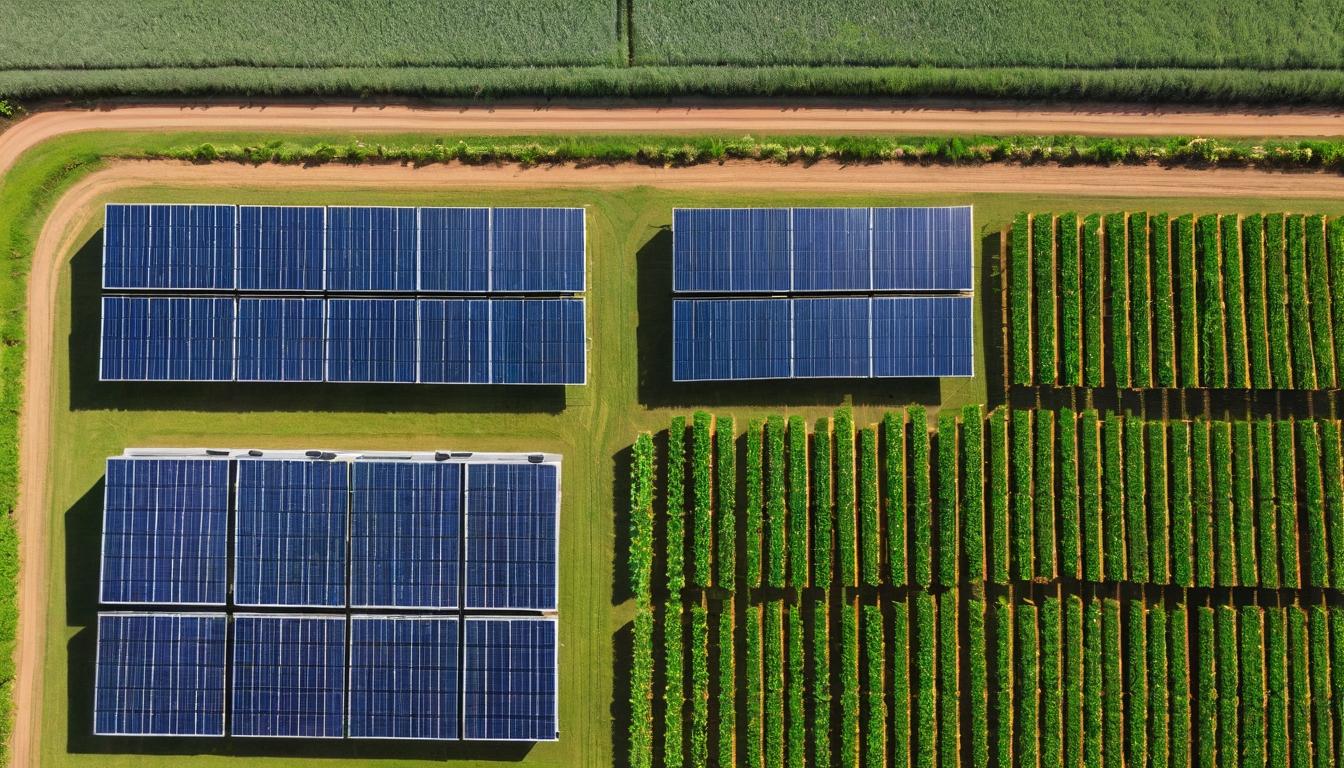When most people picture solar energy, they imagine sleek black panels shimmering on suburban rooftops. But beneath that familiar surface lies a revolution so profound it's reshaping everything from global energy markets to neighborhood power dynamics. The truth is, solar technology has evolved far beyond simple electricity generation—it's becoming the backbone of a smarter, more resilient energy ecosystem that could fundamentally change how we power our lives.
Recent breakthroughs in perovskite solar cells are pushing efficiency boundaries that experts once considered theoretical limits. These next-generation materials can be printed like newspaper ink, potentially slashing manufacturing costs by up to 80% while achieving conversion rates that make traditional silicon panels look primitive. The implications are staggering: imagine solar films applied to windows that generate power while maintaining transparency, or flexible solar fabrics integrated into building materials themselves. We're not just talking about cleaner energy—we're witnessing the birth of solar as a ubiquitous technology woven into the very fabric of our infrastructure.
The financial landscape of solar has undergone its own quiet transformation. While federal tax credits grab headlines, the real story lies in innovative financing models that are democratizing access. Community solar gardens allow renters and apartment dwellers to buy shares in off-site solar farms, receiving credits on their utility bills without installing a single panel. Meanwhile, solar-as-a-service models eliminate upfront costs entirely, treating sunlight as a subscription commodity much like streaming services treat entertainment. These financial innovations are particularly crucial for low-income communities, where energy burden—the percentage of income spent on utilities—often reaches crippling levels.
Storage technology represents the missing puzzle piece that's finally falling into place. The lithium-ion batteries powering our phones and electric vehicles are now being deployed at grid scale, creating virtual power plants that can smooth out solar's intermittent nature. But the real excitement lies in emerging technologies like flow batteries and thermal storage systems that can store energy for weeks rather than hours. California's recent success with distributed battery networks during heat waves demonstrates how millions of small-scale systems can collectively provide grid stability that rivals traditional power plants.
Manufacturing trends tell another compelling story. While China dominates panel production, America is experiencing a manufacturing renaissance driven by the Inflation Reduction Act. New factories are springing up across the Sun Belt, creating jobs while reducing supply chain vulnerabilities. More importantly, manufacturers are focusing on circular economy principles—designing panels for easy disassembly and recycling at end-of-life. The goal isn't just cleaner energy production but cleaner manufacturing processes that minimize environmental impact from cradle to grave.
The integration of artificial intelligence with solar systems represents perhaps the most underreported development. Smart inverters now communicate with each other and grid operators, dynamically adjusting output to match real-time demand. Machine learning algorithms optimize panel angles throughout the day, predict maintenance needs before failures occur, and even forecast energy production based on weather patterns. This digital layer transforms solar from a passive generator into an intelligent participant in the energy marketplace.
Agricultural applications showcase solar's versatility in unexpected domains. Agrivoltaics—the co-location of solar panels and crop production—is demonstrating remarkable synergies. Partial shading from elevated panels reduces water evaporation while creating microclimates that benefit certain crops. Farmers gain additional revenue streams while maintaining agricultural production, addressing land-use conflicts that often plague large-scale solar projects. Early results show some crops actually thrive under these conditions, challenging conventional wisdom about solar's incompatibility with agriculture.
Policy developments at state and local levels are creating fascinating laboratories of innovation. Some municipalities are streamlining permitting through automated systems that approve standard residential installations in minutes rather than weeks. Others are experimenting with solar-ready building codes that require new constructions to be pre-wired for easy panel integration. These granular policy changes, while less glamorous than federal legislation, often prove more impactful in accelerating adoption at the community level.
The workforce transformation deserves equal attention. Solar employment has grown faster than any other energy sector, but the nature of these jobs is evolving beyond installation. Positions in system design, grid integration, cybersecurity for smart inverters, and recycling technology are creating career pathways that blend traditional trades with high-tech skills. Training programs are emerging that prepare workers for this hybrid future, recognizing that the solar industry needs as many data scientists as it does electricians.
Looking forward, the convergence of solar with other technologies promises even more radical changes. Vehicle-to-grid systems will turn electric cars into mobile batteries that can power homes during outages or sell electricity back to the grid during peak demand. Solar-powered hydrogen production could provide clean fuel for industries that electrification can't easily reach. And space-based solar—once the stuff of science fiction—is attracting serious investment from governments and private companies alike.
The solar revolution isn't happening in dramatic leaps but through thousands of small innovations accumulating into transformative change. What began as a niche technology for environmental enthusiasts has matured into a sophisticated industry poised to redefine our relationship with energy. The panels on your neighbor's roof are just the visible tip of an iceberg that extends from nanotechnology laboratories to financial trading floors to agricultural fields. This isn't just about generating electricity—it's about rebuilding our energy infrastructure from the ground up, one photon at a time.
The hidden revolution: how solar energy is quietly transforming everything from your roof to your wallet

